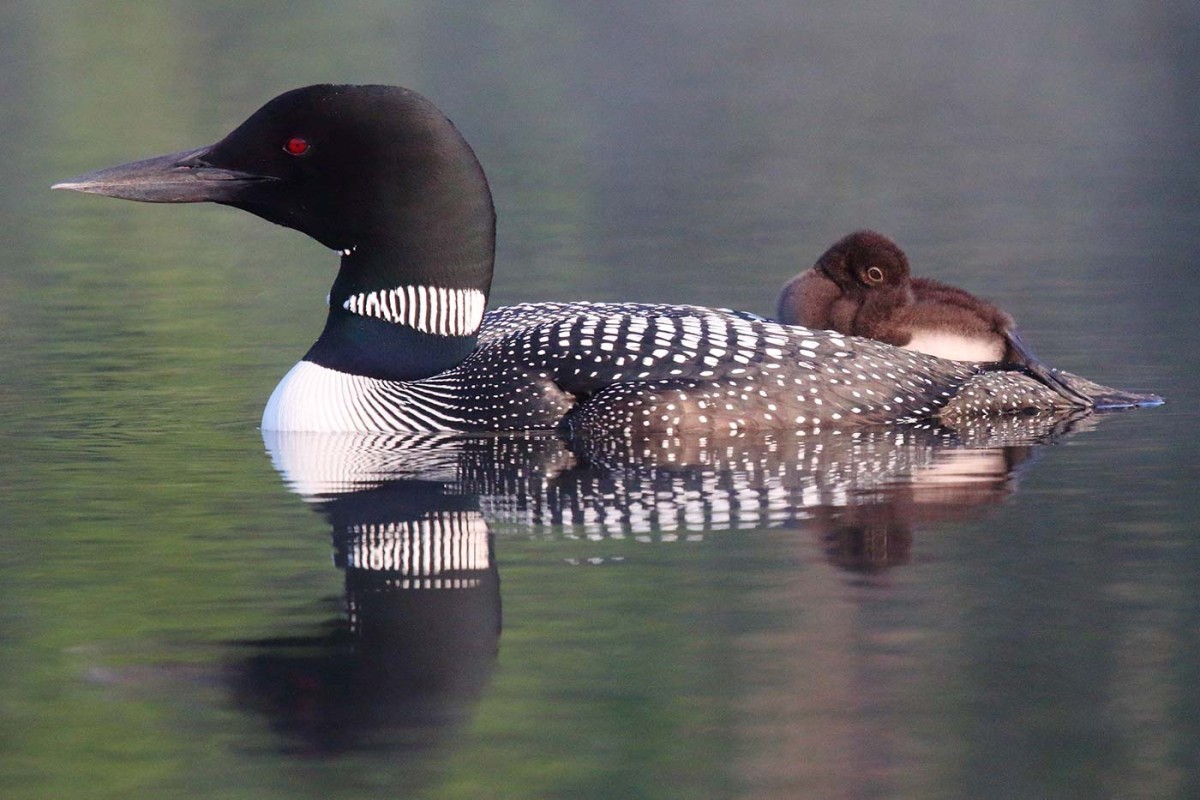
Common loons in the Northeast and nearby southern Canada have faced numerous environmental changes that have impacted their health in recent decades, from acid rain and mercury to the changing climate. And yet their populations have remained somewhat stable. Some Canadian researchers have observed, however, that loons may be producing fewer chicks, particularly in years when ice remains on local lakes later than usual.
To better understand the factors affecting loon chick production, Acadia University postdoctoral researcher Kristin Bianchini visited 69 lakes in southern Ontario in 2019 to document loon breeding success and to compare it to similar data going back to 1981. She also analyzed ice-off dates for 130 lakes in the region from Canada’s Ice Watch citizen science project.
As expected, she found fewer loon pairs on the lakes, fewer breeding attempts, and fewer chicks per loon pair in years when ice remained on lakes later in the season. But Bianchini said that the ice was probably not the main culprit.
“The timing of when loons arrive on a lake is determined by when the ice leaves,” she said. “They do reconnaissance flights to find out when lakes are ice free and then claim the lake as their breeding territory. But they typically wait four to six weeks after they arrive before they start producing eggs, so they probably aren’t delayed by the ice.”
Rather, she thinks her findings are the result of one of three indirect effects. It could be that when ice-off occurs early – allowing loons to establish their territory by about mid-April – they are more successful at defending the territory from intruders. Loons may also be more likely to abandon their nests when blackflies are most abundant, which tends to happen when spring temperatures are cooler and ice remains on lakes later.
Her results may also have to do with fish. “Some studies show that later ice cover on a lake can decrease the abundance of fish in the lake, and that would decrease food for the loons and their chicks,” she continued. “Warmer temperatures can boost fish in some cases.”
Given predictions for warmer temperatures in the future, won’t it be unlikely that loons will be faced with late ice-off dates on their preferred breeding lakes? True, Bianchini said, but it’s not that simple.
“Climate affects so many other things, not just ice cover,” she said. “Climate change is predicted to decrease the habitat available for loons, increase acidity and mercury, and other things, so it’s very complicated how climate could affect loons.
“Ice-off can help explain how many chicks they produce in a single year, but climate change affects so many other things that it’s hard to make a direct link between whether loons will do better in the long run,” Bianchini added. “My overall message is that ice-off dates can be used to explain variations in loon presence and how many chicks they produce. It provides a better understanding of how changes in climate could affect loons in the future.”

